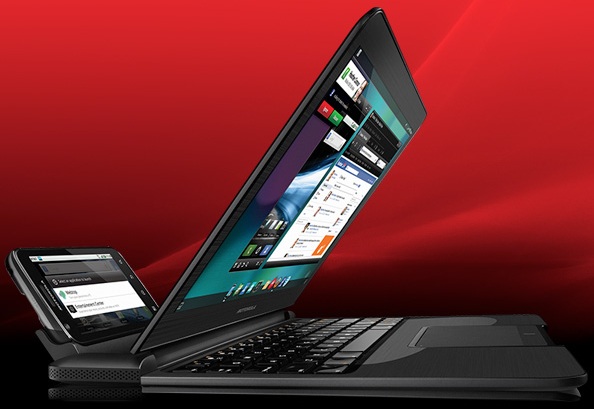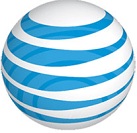If you’re using iPhone tethering over AT&T without AT&T’s permission, you might get an e-mail like this.
Tag Archives | AT&T
Maybe They Should Call It 2 3/4th G?
PCMag’s Sascha Segan is ticked off over AT&T’s 4G phones–which he says don’t even meet the company’s not-so-rigorous definition of “4G.”
2 comments
Doing the iPad 2 3G Pricing Math
AppleInsider has a good breakdown of the pricing differences for wireless service on AT&T and Verizon’s versions of the 3G iPad–as well as fo iPhone tethering, which may be a better deal for many folks.
One comment
Personal Hotspot Coming to AT&T iPhone 4
 AT&T confirmed Thursday that it would indeed bring the Personal Hotspot feature included in iOS 4.3 to its iPhone 4 customers. Verizon customers got to enjoy this feature at the launch of the device last month, for a $20 extra charge above the regular data plan.
AT&T confirmed Thursday that it would indeed bring the Personal Hotspot feature included in iOS 4.3 to its iPhone 4 customers. Verizon customers got to enjoy this feature at the launch of the device last month, for a $20 extra charge above the regular data plan.
Verizon users get 2GB of data to use for tethering: AT&T will also give its own users 2GB for the same price. In both cases, the data used in tethering applications is separate from the data used on the phone itself — meaning if you go over on either, you’ll be socked with overage charges in either case.
At least AT&T finally realized it’s not right to take your tethering data out of your regular data plan, yet still charge you an additional fee. Maybe it’s just me, but that seemed like highway robbery. In any case, AT&T’s announcement is sure to begin the debate on whether or not the user has a right to use the data they pay for in the manner they want.
[UPDATE: AT&T has contacted us to clarify: “AT&T counts data used in tethering applications and data used on the phone together,” spokesperson Steve Kerns told us. “So a 2GB tethering plan and a 2GB phone data plan would provide 4GB of data that customers can use on the phone or through hotspot use.”]
8 comments
The Glorious Minimalism of the Backside of the Verizon iPhone
 At the moment, I’m walking around with two iPhone 4s in my pocket: my personal AT&T phone, and a Verizon iPhone lent to me by Apple for review. (More thoughts on it coming up.)
At the moment, I’m walking around with two iPhone 4s in my pocket: my personal AT&T phone, and a Verizon iPhone lent to me by Apple for review. (More thoughts on it coming up.)
As everyone reading this knows by now, the two flavors of iPhone are close to identical. So much so that I keep getting confused about which one is which–at least until I turn them on, whereupon I can check out the carrier identifier in the upper left-hand corner.
Without turning the phones on, I could examine the slightly different placement of the antennas and mute switches. But there’s a more obvious difference that I’ve found quite handy: The Verizon iPhone has way less fine type on its back, and is missing an entire row of regulatory logos.
By happy coincidence, I just read an Ars Technica piece by Casey Johnston that explains the stuff on the back of iPhones, and helped me figure out why there’s so much less of it on the new Verizon model.
7 comments
Confirmed: AT&T, Motorola Have Ruined the Atrix 4G
 When I heaped lavish praise on Motorola’s Atrix 4G smartphone during CES, those plaudits came with a caveat: For this wacky modular computing concept to work, AT&T needed reasonable pricing for the Atrix’s laptop dock and accompanying data plans.
When I heaped lavish praise on Motorola’s Atrix 4G smartphone during CES, those plaudits came with a caveat: For this wacky modular computing concept to work, AT&T needed reasonable pricing for the Atrix’s laptop dock and accompanying data plans.
Unfortunately, that won’t be the case. When Atrix 4G pre-orders begin on February 13, the phone itself will cost $200 like almost every other Android superphone on the market — no problems there.
But the laptop dock, which taps the phone’s processor to run a full version of the Firefox browser, will cost $500 on its own. You can get the phone and dock together for $500, but then you’ll have to include tethering (another $20 per month) in your contract. And even if you don’t take the bundle, the dock will still require tethering to access AT&T’s network.
The laptop dock consists only of a screen, keyboard, mouse and battery, and yet it costs the same on its own as an entire high-powered netbook, processor and all. That alone is a dealbreaker. But the real disappointment is AT&T’s attitude towards the very concept of docking. Even though the dock’s sole functionality is to browse the web — and not perform bandwidth-intensive desktop tasks like online gaming or peer-to-peer file sharing — AT&T still treats it like a full-blown laptop.
15 comments
AT&T to Double Tethering Cap, Add Wi-Fi Hotspot Service for Some Phones
 Looks like AT&T has realized that its smartphone tethering plan is a raw deal, because the carrier will soon double the plan’s bandwidth cap while also allowing some phones to act as wireless hotspots.
Looks like AT&T has realized that its smartphone tethering plan is a raw deal, because the carrier will soon double the plan’s bandwidth cap while also allowing some phones to act as wireless hotspots.
Currently, AT&T charges $20 per month for tethering on top of its $25 per month smartphone data plan. But AT&T doesn’t provide any extra data for this service, so subscribers are confined to the same 2 GB per month for which they’re already paying.
That’ll change starting February 13, when AT&T starts selling phones equipped with Wi-Fi hotspot capabilities. Both wireless and USB tethering will extend users’ bandwidth caps to 4 GB per month for the same $20 surcharge as before. Each additional GB cost $10.
3 comments
Verizon's iPhone 4 Tethering Reality Check
 Much ado was made over the hotspot feature of Verizon’s version of the iPhone 4. However, some who may have thought the carrier was going to make this a standard feature may want to think again. A Verizon spokesperson has confirmed to Macworld that the tethering functionality would be an optional, extra-cost feature.
Much ado was made over the hotspot feature of Verizon’s version of the iPhone 4. However, some who may have thought the carrier was going to make this a standard feature may want to think again. A Verizon spokesperson has confirmed to Macworld that the tethering functionality would be an optional, extra-cost feature.
Verizon will charge an additional $20 per month, which will give the user 2GB of data to use (additional usage is charged at $20 per 1GB). This will be a separate data plan altogether, and follows pricing for tethering on other smart phones on the network that have the capability. While the charge may dampen the enthusiasm a bit, it’s better than AT&T’s tethering offering, which also costs $20 a month, but takes data of your iPhone data plan. That means you only have 2GB to use overall before you’re socked with overage charges.
I wonder if AT&T will respond by changing its own tethering plan, but I’m not going to hold my breath.
8 comments
How To: Prepare to Switch from AT&T to Verizon
[Note: This post republished with permission from our pals at Macworld.]
 Has the flame fizzled out of your relationship with AT&T? Was it originally love at first sight, but now you’ve caught yourself eyeing that new iPhone Verizon just announced? Don’t worry, our love affairs with gadgets and wireless carriers are often fleeting, and the only thing at risk of getting hurt is your wallet. If you’re looking to switch from AT&T for Verizon’s new iPhone 4, here’s how you can do it.
Has the flame fizzled out of your relationship with AT&T? Was it originally love at first sight, but now you’ve caught yourself eyeing that new iPhone Verizon just announced? Don’t worry, our love affairs with gadgets and wireless carriers are often fleeting, and the only thing at risk of getting hurt is your wallet. If you’re looking to switch from AT&T for Verizon’s new iPhone 4, here’s how you can do it.
I’ll try to answer a few general questions before we get into details. First, you should be able to bring your current phone number to Verizon if you’re switching from AT&T. It’s the law. You might even be able to bring your home phone number, too.
Also, as with all wireless carriers, if you signed a contract to get your phone for cheaper than its full retail price, AT&T charges an early termination fee (ETF) if you want to break that contract early. But whether you’re going to cut the AT&T chord or you’re a free spirit with no obligations, let’s start preparing you for a Verizon iPhone.
Continue Reading →
2 comments
The Phone of the Future is Still Broken
On my way home from Verizon’s iPhone event in New York–I returned to the John F. Kennedy International Airport seven hours after I left it–I wanted to sit down for a moment at the international terminal. Once again, the most convenient place to perch was at a fancy online-enabled pay phone from 1991 which I discovered during a trip last August. Back then, the phone had AT&T signage, was missing most of its keys, and didn’t work. I wasn’t sure if it had been in operational condition anytime this millennium, in fact.
This time, the phone showed signs that it wasn’t an orphan. The AT&T branding was gone, replaced by that of GTL (a company which appears to specialize in providing phones to prisons). And the keyboard had been repaired (mostly: the “3” and “5” keys were missing)
But the phone still didn’t work–no display, no dial tone, no nothing. I wonder when anyone wanted to use it–at least for a purpose other than making a voice call–and was frustrated by its sad condition?

